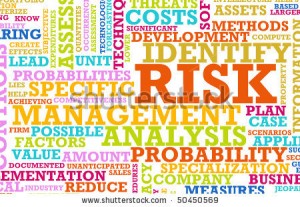Human Capital is regarded to be the most important asset and as one of the greatest investment to provide sustainable competitive advantage for any organization. But if it is truly is an asset why doesn’t appear in the balance sheet? Given the rather intangible character of human capital, HR is often seen as software rather than hardware. The financial impact of HR strategy is not measured consistently. Most research into this topic is rather academic.
In many companies there has been a lack of understanding and visibility of how human capital is managed — a shortage of analytical insights about where investments are made, what form the investments take, their impact, and how best to shift resources and practices. For example, in a survey conducted by Mercer, CFOs reported that their organizations spent 36% of the revenue on human expenses, but only 16% of the CFOs said that they had anything more than a moderate understanding of the return on human capital investment. Without clear metrics and lack of an in depth view of the data on workforce, the organizations have not had business intelligence reporting as their key asset and thus have not had the access into insights of creating strategies to drive better business performance.
For instance, let’s take a very common metric – the Absenteeism rate. Every absent person is causing an exponential amount of loss in revenue. Besides personal cost, an absent worker puts a heavy strain on others, lowers overall productivity and delay actual delivery to clients. Research by the CRF Institute into the HR management of up to 500 employers shows that since absenteeism is a strong indicator for both physical and mental well being of the staff, influencing absenteeism brings back investments in HR. Findings from this research indicate that development of staff and business opportunities, flexible working arrangements and counselling to support work-life balance have significant effect on the absenteeism rate. Thus, absenteeism can be represented as a financial asset and offering employees right benefit shall have huge impact on absenteeism which translates directly into business results.
[1]Steps for implementing HR Analytics in an organization
Implementing HR Analytics in an organisation requires a structured approach in order to give fruitful results. A considerable amount of cost both direct as well as in direct is involved while implementing such a process and so it becomes more important for organisations to have well sorted process for its implementation. The major steps involved for implementing such a process are as followed
Step 1: Determining the critical areas or issues of the organization
It deals with identifying the most critical problems or sectors of the company. Higher level as well as middle level executives will the most important role in determining the same. Without settling the critical issue the company faces in the larger context of the business, any analysis will be focused on confirming an executive’s hunch instead of thoroughly examining and solving the problem.
Step 2: Making a Conceptual Model to Guide the analysis
The next step deals with forming a model to give an idea of the flow of organisational processes in the selected areas. The relevant data that is required to be captured at each of this processes needs to be determined.
There is also a need to understand how missing data may limit the interpretation of the findings.
Step 3: Capture and process relevant data
This step deals with capturing important data available to analyse. More often than not organisations start collecting data that is not needed or cleaning data that may be important. So relevant data which can provide meaningful information needs to be captured and different databases containing similar information needs to be integrated. After the data is captured it needs to be processed in a form that can be analysed.
Step 4: Apply Analytical Tools and techniques
This step involves applying different analytical techniques and tools to the relevant data captured and come up with meaningful information which can aid the organisation. This should address the issue in such a way so that it is practical and relevant to the business. There are a range of analytical and statistical tools available and each of them has their own strengths and weaknesses. Thus the tool needs to be judiciously chosen based on the cost of the cost to the organisation, complexity and quantity of data to be analysed and the impact it will have on the organisation.
Step 5: Presenting the analysed data into a meaningful solution to the stakeholders
The analysed data needs to be processed in a form that is understood by the various stakeholders of the process. The results presented must be in consistency with management policies and culture of the organisation. The various stakeholders should be made an active part of the dialogues to connect analytical results with their business experience. The inputs from the stakeholders shall infuse light into the obtained results and provide the path for taking up transformative actions.
Step 6: Designing and implementation of the Action Plan
This step provides dividing the action plan into a series of steps that needs to be implemented to make sure that the desired result is achieved. The proposed solution must be translated into a sustainable set of actions and such actions should be regularly monitored to obtain desired outcome. The tools and processes required for successful implementation of such actions at every step needs to be recognized. The role of various stakeholders in implementing the action the action plan must also be made clear
Domains in HR where Analytics can be used
Business Analytics has immense scope and possibilities in the field of Human Resource Management. The various domains of Human Resource Management where analytics can be used are –
- Recruitment
- Retention
- Performance and Career Management
- Training
- Compensation and Benefits
- Workforce
- Organizational Benefits
Barriers of Organizations to use HR Analytics
Implementing HR Analytics in various operations of an organisation may face many challenges. The major barriers of organisations to use HR Analytics can be one or more of the following:
- Lack of understanding of the organisation as to how analytics should be used to improve business
- Lack of management bandwidth due to competing priorities.
- Lack of skills internally in line of business to implement such a process
- Inability to get the relevant data required for the application of such a process
- Existing culture in the organisation does not encourage sharing information and hence such a process
- Lack of ownership or other concerns with data obtained for this purpose.
- Lack of sponsorship or support from the executive level to implement such processes
- Implementing such practices is not cost effective compared to the existing practice
With data becoming widely available and more easily accessible, industries are quick to realize the value of insights that analytics can uncover. In Human Resources, with the automation of many HR transactions, from recruitment to retirement along with the need to perform strategically, analytics of the workforce is more important than ever. HR analytics about the total amount and the quality of talent, knowledge, and expertise to move your organization forward and stay ahead of competition. It’s about measuring the return on human capital investment and measuring the impact and how HR is driving performance, productivity, and profitability. Analytics of the workforce, a company’s most important asset, should be an opportunity for businesses, particularly for HR, to transform itself and align with the business strategy. Organizations should thereby look into opportunities of leveraging this field to build a strong and effective workplace.
[1] Ivey Business Journal





9 Comments. Leave new
Good one..
Good effort..
informative 🙂
Well explained.
nice
Excellent piece of work.. Informative one..
nice
nice one
well explained with good points